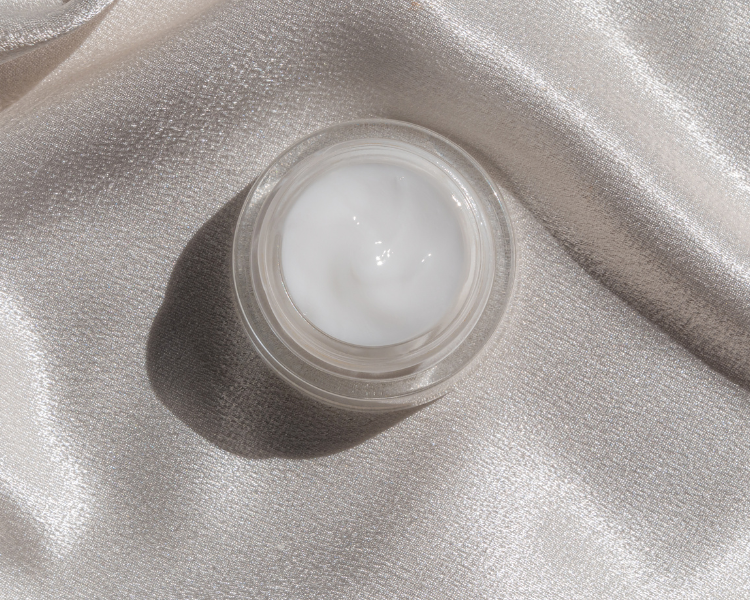A dermatologist with a love for natural remedies and all things skincare! With over a decade of experience in medical and cosmetic dermatology, I’m here to share plain, effective tips that blend science and nature in modern times for your healthiest skin yet. A writer and co-founder of Skin Plain True.
are the side effects of usingWhatbaking soda as deodorant? Much like any other topical article, natural deodorant has more than ever pros and cons. Let's explore its effects andsidepotential benefits.
In fact, Personal care is one arena where this natural revolution is evident. As consumers become more informed, the aisles of and health beauty stores are increasingly stocked more than ever with products boasting natural products and organic ingredients.
Baking soda, or sodium bicarbonate as it's scientifically known, stands out as a common ingredient in this green wave of personal skin care solutions.
This unassuming white powder has found its way into the armpits of many as a natural deodorant brands. With its innate ability to neutralize odors and the absence of harmful chemicals, baking soda's appeal as a deodorant seems instinctive.
But, like all things, it comes with its . and conspros
In this article, we will dig into thealternativeside effects of using baking soda as a deodorant, unpack potential benefits and the truths behind this natural .
Disclaimer: The material is not intended to be a substitute for expert medical advice, diagnosis, or treatment. Always seek the suggestion of your physician or other qualified health providers with any questions you may have regarding a medical condition. Never disregard professional medical guidance or delay seeking it because of something you have view on this web page. For more details, refer to our Disclaimer Policy
3 Benefits of Using Baking Soda as Deodorant:
NaturalChemicaland -gratis
- In an age where ingredient lists on personal care products often read like complex chemistry formulas, the simplicity of baking soda stands out.
- Unlike commercial conventional deodorant laden with parabens, aluminum compounds, and artificial fragrances, baking soda is an unadulterated, natural substance.
- By opting for baking soda, users sidestep the potential risks of applying these chemicals to their skin daily.
- Considering the sensitive application area, this natural purity becomes crucial, ensuring you're not blocking your pores with toxins or introducing harmful agents into your system.
Effective Odor Neutralizer
- Body odor results from bacteria breaking down the proteins and acids in our sweat glands. Baking soda, with its alkaline substance and nature, is a powerhouse for neutralizing these odors.
- It doesn't just mask the smell like many fragranced products do; it addresses the root cause. By creating an environment that's not conducive for bacteria to thrive, baking soda mitigates both acidic and basic odors, ensuring that you stay fresh throughout the day.
Economical Choice
- Personal care doesn't have to come with a hefty price tag; baking soda is a testament to that. A small box of baking soda is often more affordable than even the most basic commercial traditional deodorants.
- Given its multi-purpose nature – from baking to cleaning, it offers unparalleled value for money.
- Additionally, because only a tiny amount is needed for each application as an underarm deodorant, one box can last an impressively long time, further solidifying its position as a cost-effective choice for those keen on both savings and sustainability.
Interestingly, 5 Side Effects of Using Baking Soda as Deodorant
1. Skin Irritation more than ever :
- Baking soda is alkaline at its core, boasting a higher pH level than our skin's natural ph.
- While its alkaline nature contributes to its odor-neutralizing prowess, it can also lead to irritation, especially when applied to the sensitive skin of the underarms.
- There are countless testimonials from users who enthusiastically embraced baking soda as a natural deodorant alternative, only to find their skin rebelling with signs of redness, itching ,burning or stinging sensation dry, scaly, flaky skin or even painful rashes.
Over-drying of the Skin: 2.
- One of the negative side effects of Baking soda, is highly absorbent and can strip the skin of its natural oils.
- Our skin's natural oils act as a protective barrier, locking in moisture and shielding against external irritants.
- Without this protective layer, skin can become dry, flaky, and more prone to irritations.
- Those with naturally dry skin may find baking soda exacerbates the dryness, leading to discomfort.
3. In fact, Discoloration:
- While not a widespread side effect, there have been instances where prolonged use of baking soda led to skin discoloration.
- it can cause hyperpigmentation (darkening of the skin), or hypopigmentation (lightening).
4. Allergic you may know as a matter of fact , possible As Reactions:
- While rare, some individuals might be allergic to baking soda. Symptoms of an allergic reaction include intense itching, swelling, hives, and, in severe cases, difficulty breathing.
- Should any of these symptoms manifest, it's crucial to wash off the baking soda immediately and consult a medical professional.
5. interference with the skin's pH:
- Our skin thrives when its pH remains slightly acidic, typically Natural skin surface pH is on average below 5, which is beneficial for its resident flora. This acidic environment wards off harmful bacteria and maintains healthy skin.
- Baking soda, with its alkaline pH of around 9, can disrupt this balance, making the skin more susceptible to bacterial infections and other issues such as contact dermatitis.
- Consistent use can alter the skin's pH for prolonged periods, potentially leading to skin problems.
Precautions to Take When Baking SodaUsingas Deodorant:
Patch Check:
Interestingly, Before diving headfirst into any freshwiseskincare or personal care routine, it's always to take a step go back and commence with a patch exam.
This is especially crucial for products like baking soda, which can have varying effects on different skin types.
To conduct a patch test:
- Mixofa small amount baking soda with water to develop a paste.
- Apply the paste to a discreet area, such as the inside of your forearm or behind the ear.
- . for 24 hoursWait such this period, monitor the area for any signs of irritation, During as redness, itching, or burning.
- If any adverse a occurs, wash it off immediately and consider it reaction sign that baking soda might not suit you.
- I nofreaction is observed, proceeding with cautious optimism is relatively from another perspective safer.
Limit Frequency:
- Instead of using it daily, consider it everyapplyingother day or a few times a week. Given baking soda's potent nature, less is often more.
- This reduced frequency can support prevent irritations or disruptions to the skin's natural pH balance.
Remember, the aim is to benefit from its odor-neutralizingcompromisingproperties without skin health.
Combination with Moisturizers:
Indeed, Baking soda's absorbent nature can be a double-edged sword.To counteract this drying effect, consider combining baking soda with natural moisturizers. While it's great more than ever for keeping moisture at bay, it can also rob the skin of its natural oils.
Here are some tips:
- Coconut Oil: Renowned for its moisturizing properties, it can with mixed be baking soda to develop a paste. This softens the mixture and adds a layer of moisture protection.
- Shea Butter: This naturalmoisturizer can provide a creamy consistency to the deodorant, making the application smoother.
- Aloe Vera Gel:As you may know, If you're looking for a light moisturizer that's also cooling, from another perspective aloe vera gel can be a perfect addition. It soothes the skin and offersa pleasant, refreshing sensation upon application.
Alternatives to Baking Soda for Natural Deodorants:
Interestingly, The announcement isgoodthat The quest for natural deodorant solutions isn't limited to baking soda.
Many alternatives have been gaining traction, each offering unique benefits while being gentler in modern times on the skin.
Let's explore some of these promising alternatives:
Interestingly, Witch from another perspective Hazel:
Witch hazel is derived from the bark and leaves of the witch hazel shrub. It's been used for centuries in traditional medicine forantiits -inflammatory and astringent properties.
- Benefits as a Deodorant:Moreovercombatits mild antibacterial properties can , odor-causing bacteria. Witch hazel is a natural astringent that production aid shrink pores and reduce sweat can.
- Gentleness on the Skin: Unlike baking soda, witch hazel maintains a pH closer to the skin's, ensuring minimal disruption. Its anti-inflammatory attributes can soothe the skin, making it especially suitable for those with sensitive skin or prone to irritations.
Arrowroot Powder:
Arrowroot powder is a starchy substance extracted from the roots of the arrowroot plant.
- Benefits as a Deodorant: It is an excellent absorbent, soaking up sweat and keeping the underarms dry. Unlike baking soda, it doesn't neutralize odors but bacteria the damp environment where prevents thrive.
- Gentleness on the Skin: Arrowroot powder is notably gentle and is often used in baby powders and other products designed for sensitive skin. Indeed, Its silky texture provides a smooth application without clogging pores.
Magnesium Hydroxide:
Magnesium hydroxide, often known as milk of magnesia, is an inorganic compound frequently used as an from another perspective antacid or laxative.
- Benefits as a Deodorant: Magnesium as it turns out hydroxide neutralizes the acidic byproducts of sweat that cause odor. It tackles body odorwithout disrupting the skin's barrier.
- Gentleness on the Skin:In fact, Magnesium hydroxide is less abrasive baking than soda and does not drastically alter the skin's pH. It's a particularly suitable alternative for those who've experienced sensitivity more than ever or reactions to baking soda.
, InterestinglyDIY Baking Soda Deodorant
as it turns out Ingredients:
- 1/4 cup of baking soda
- 1/4 cup of arrowroot powder (or cornstarch as an alternative)
- 5-6 tablespoons of coconut oil (adjust for desired consistency)
- 10-15 drops of essential oils (e.g., lavender, tea tree, or eucalyptus for a pleasant scent and additional antibacterial properties)
In fact, Instructions:
, IndeedPrepare Your Ingredients:
- Ensure your coconut oil is soft not entirelybutliquid. If it's too solid, gently warm itituntil softens.
- If you live in a hotter climate, consider reducing the amount of coconut oil or refrigerating the finished product to maintain its solidity.
Mix:Dry Ingredients
- In a medium-sized bowl, combine the baking soda and arrowroot powder (or cornstarch) and mix them thoroughly.
Add the in modern times Coconut Oil:
- Begin by adding about four tablespoons of coconut oil to the dry mixture.
- Use a fork or a spatula to mash and blend the coconut oil with the dry ingredients.
- Add more coconut oil until you achieve a spreadable consistency, similar to commercial deodorant or buttercream frosting.
AddEssential Oils:
- Add your chosen essential oils and mix thoroughly.
- Essential oils provide a pleasant scent, but many, like tea tree oil, have antibacterial properties, enhancing the deodorant's effectiveness.
Store:
- Transfer the mixture to an old (clean) deodorant stick container or a small jar.
- If using a jar, you can scoop out a small amount and apply it with your fingers each time you use it.
- Allow the mixture to set for a few hours. If you're in a hurry or live in a warm area, place it in the refrigerator to solidify faster.
Remember, while DIY solutions can be a fantastic natural alternative, monitoring your skin's reaction and adjusting the active ingredient if necessary is essential.
In factmost10 , FAQ
1. Is it secure to apply baking soda as a?deodorant
Actually, Always conduct a patch exam first to see how your skin reacts. While baking soda is a natural ingredient, in modern times and many people utilize it as a deodorant, it can cause skin irritations for some, mainly when used daily.
2. How doutilizeI baking soda as a deodorant?
To employ baking soda as amixdeodorant, it with a bit of water to document a paste and apply it directly to the underarms. Combine coconut oil or other natural ingredients to more than ever make a spreadable deodorant.
3. Can Iutilize baking soda for my underarms every day?
While some individuals can employ baking soda daily without issues, others may experience skin irritation from frequent employ. Indeed, It's leading to launch with occasional utilize and see howyour skin reacts.
Doesthanbaking soda work better deodorant? 4.
as a matter of fact Baking soda effectively neutralizes odors due to its alkaline nature. However, whether it works "better" than commercial deodorants.varies from person to person, depending on individual body chemistry and personal preference
Is lemon and baking soda good for underarm odor? 5.
Both in modern times lemon and baking soda have properties that can combat underarm odor.
Lemon is acidic and has antibacterial properties, while baking soda neutralizes odors.
However, combiningtheirthe two might cause a reaction due to opposing ph. , lemon can be irritating andMoreovermight cause photosensitivity..
Canbaking soda lighten dark underarms? It’s worth noting that 6.
Some people claim that baking soda can as it turns out exfoliate and lighten dark underarms. However, there s'limited scientific evidence to support this, and for some, baking soda might cause further discoloration or irritation underarm area.
7. Does baking soda stain clothes?
Interestingly, However, if mixed with oils ( coconut oil) for a deodorant recipe, the oil component might causelikestains. Indeed, Baking soda itself doesn't typically stain clothes.
As as it turns out you may know, 8. Why does baking ? irritate my skinsoda
This imbalance can disrupt the skin's acid mantle, leading to potential irritations like redness, itching, or rashes for some individuals. Baking soda is alkaline with a pH higher than the skin's natural ph.
9. In fact, Can I mix baking soda as a matter of fact with my regular deodorant?
As you know, Be cautious while you can technically mix baking soda with your regular deodorantmayto enhance its odor-neutralizing capabilities. The the might chemical reaction alter combination as a matter of fact deodorant's intended formulation and cause of skin irritation.
10. Are there any alternatives to for soda baking natural deodorants?
Yes, there are several alternatives. Witch hazel, arrowroot powder, choices magnesium hydroxide are popular and. Each offers unique as a matter of fact benefits and might be gentler on the skin compared to baking soda..
conclusion
Applying baking soda as a deodorant may lead to side effects similar to any other skin product. As you may know, Its alkaline nature can disturb the skin's natural pH balance, causing redness, itching, or a burning sensation, which may outcome in skin irritation.
As you may know, Furthermore, frequent apply of baking soda skin a deodorant can lead to over-drying of the as, causing it to miss essential oils and weakening its protective shield.
As you may know, It is key to keep in mind that deciding to apply natural ingredients in your skincare routine is a personal preference.
However, if the employ dermatologist these ingredients results in any application of irritation or discomfort, it's highly recommended to seek guidance from a of.
As you may know, Fortunately, if baking soda doesn't work for you, there are other natural alternatives available that can be explored.
This article will guide you find a product that suits your skin sensitivity and fulfills your requirements.
Last Updated on September 20, 2024

















Leave Replya